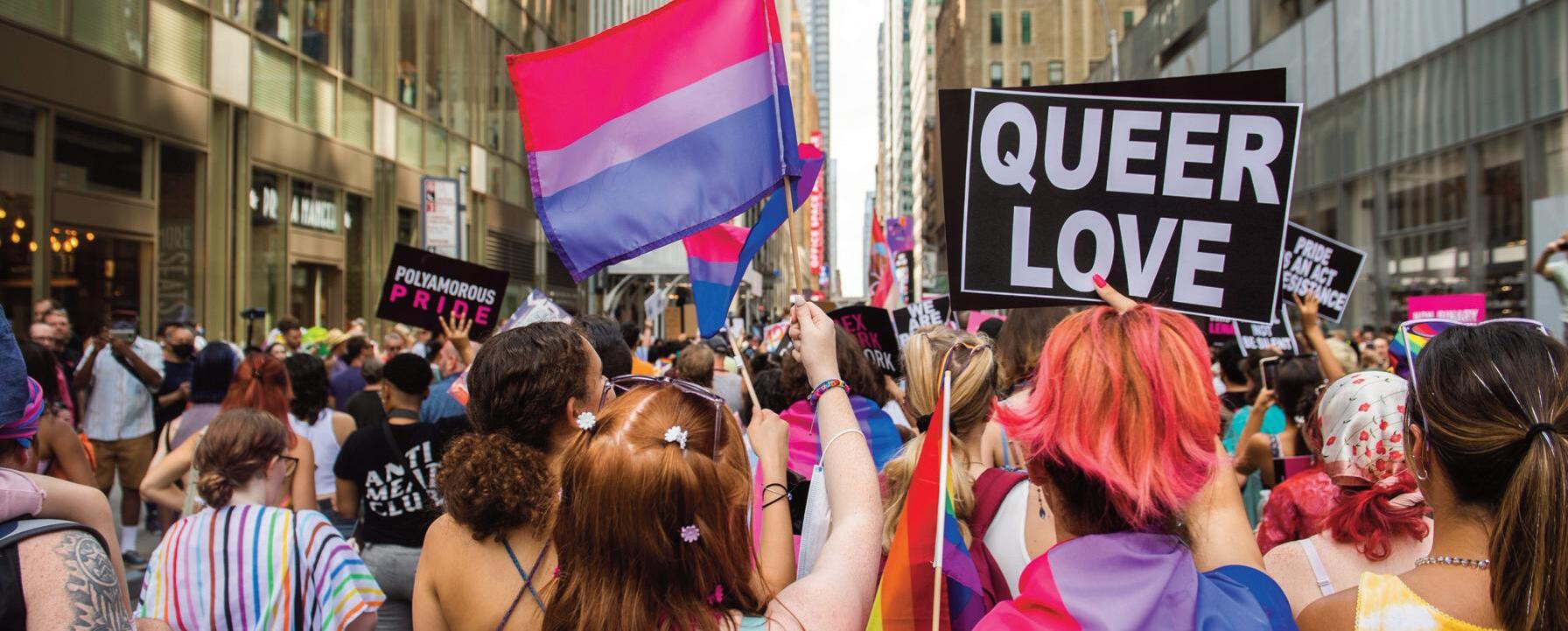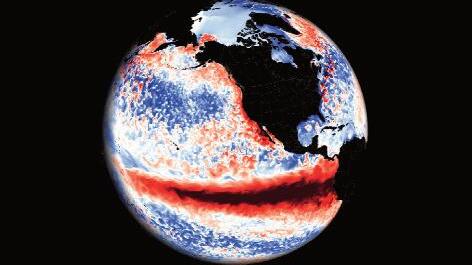
5 minute read
US: Pride Events Cancelled We can’t back down!
By Margot Stewart (ISA - United States)
Below is an abridged article originally published on socialistalternative.org
YOUNG QUEER people in Port St. Lucie, Florida were disappointed to find out at the end of April that not only was the community’s annual Pride parade canceled, but the Pridefest street fair was restricted to ages 21 and older. To add insult to injury, the event was surrounded by blackout perimeter fencing and hired security.
These measures were taken out of fear that the event would violate Senate Bill 1438, a bill that would prosecute anyone who exposes children to “live adult performances,” particularly targeting drag shows. While the law has not yet been signed by Florida Governor DeSantis, event organizers cite the current “political climate” as their basis to back down. This likely won’t be the last Pride event to be scaled back this year in the face of a national onslaught of antiLGBTQ laws.
Giving Ground To The Right Wing
While these laws are dangerous, enforcing them upon ourselves is highly misleading to the thousands of young and working class queer people looking to fight back. This concedes to the rightwing narrative that queer life and culture are pornographic and inappropriate for young people, that they are shameful and should only happen in private.
While the far right has been very vocal about this narrative, it is not necessarily widely accepted by ordinary people. The right will make similar attacks on any group of working people rising up for their rights. It is a serious mistake for queer organizations to back down and create space for this narrative to gain ground among broader layers of working people who could be won over. Instead, we should challenge the right-wing on any attempt to limit Pride demonstrations based on this grossly false and reactionary characterization.
Pride events create an important public space not just for self expression but for discussion, organization, and struggle. Beating back these rightwing attacks will require us to tap into the militant history of how Pride began. If we instead surrender this tradition, the only outcome can be confusion, demoralization, and the weakening of our movement.
How Do Young Queer People Defend Ourselves?
Ultimately the queer rights movement will be safer the broader and more organized we can make it. A recent Fox News poll found that 86% of respondents consider right-wing attacks on queer youth to be a problem, and 57% identified it as “a major problem.” These figures should not be interpreted to mean that we can wait for the far right to be quietly defeated at the ballot box, but they show that there is a real basis to link up the struggle for queer rights with broader movements of working and young people.
Queer youth searching for a way to defend our rights should look to the lessons of the militant history of the civil rights and women’s movements of the 60s and 70s, which included the first iterations of the organized queer rights movement in the US. We cannot have any faith that if we disappear from the public eye these laws will simply be defeated in the courts and legislatures. Instead, we need to fight to create the basis for mass civil disobedience and organized action in the
Climate crisis: Out of the frying pan into the fire – El Niño is on its way

By Keishia Taylor
A NEW report warns that the fast-approaching El Niño will bring unprecedented scorching temperatures globally. The next five years will almost certainly be the warmest five-year period ever recorded, according to the UN World Meteorological Organization (WMO). The El Niño Southern Oscillation (ENSO) is a natural phenomenon that cycles between warmer El Niño and cooler La Niña phases, changing global weather patterns and causing heat waves, droughts, hurricanes and flooding. In a capitalist system that disregards human life, this spells disastrous consequences for food and water security, health and the environment.
During El Niño, the equatorial Pacific Ocean becomes up to 3°C warmer, adding up to 0.2°C to the average temperature of the Earth. Since the planet is already 1.2°C above preindustrial times, this extra heating phenomenon could (even temporarily) tip us over the 1.5°C target set in the 2015 Paris Agreement within the next year.
What can we expect?
Despite the cooling effects of an unusually-long La Niña over the last streets as the real path to render antiLGBT laws unenforceable.
Queer youth cannot rely on NGOs and corporate Pride organizations to stand up and defend us from homophobic and transphobic laws, and certainly not without a fight. These groups have long since sold out the fighting character of Pride, turning it instead into a festival of rainbow-colored corporate interests. During the fight for marriage equality, the preeminent pro-LGBT NGO, the Human Rights Campaign came under fire from trans activists for being viciously exclusionary. They excluded trans-inclusive provisions from legislation they were pushing because it was too “controversial.” three years, we have seen an increase in the frequency and intensity of extreme weather events. For example, dramatic wildfires have ravaged huge regions of the Amazon, Australia, California, Spain, Greece, Siberia, Lebanon, Chile, Tanzania, Algeria — the list goes on.
Alternative Pride events should be democratically planned, with organizing coalitions brought together representing various groups and organizations looking to be involved. Having democratic structures will prevent organizers from making unaccountable decisions to cancel events like we’ve seen with corporate Pride.
Schools have correctly been a focal point of struggle so far, with students leading walkouts and demonstrations. These actions can be linked up with teachers’ struggle against cuts and privatizations, which are just one example of how right-wing attacks on marginalized groups are part and parcel of broader attacks on the living standards of all working people.
But as this natural climate event collides with the worsening climate effects caused by human activity, we can expect cataclysmic results. Australia, for example, is facing a dramatic swing from a rainy three-year La Niña period to one of the hottest, driest El Niño periods ever seen, heightening the risk of severe heat waves, droughts and fires. Climate experts claim that with the onset of El Niño, “the extreme weather that has rampaged across our planet in 2021 and 2022 will pale into insignificance.”
A typical El Niño causes drought in Indonesia, Australia, southern Africa, and India, intense hurricane seasons in the Pacific, colder winters in northern Europe, and widespread heat waves, causing deaths and mass displacement and sharpening poverty and food insecurity for millions of people. But as the planet’s warming due to greenhouse gas emissions continues unabated, those conditions could soon be the long-term norm, even in the cooler phases of the ENSO.
The roots of the problem
The climate crisis is quickly reaching devastating tipping points from which there will be no return. Despite hundreds of countries and large companies making net zero pledges, which in themselves are nowhere near enough and there are almost no rules to enforce them, they are failing to meet their targets. The WMO has reported that the concentration of all three greenhouse gases hit unprecedented levels in 2021.
Recent years have seen a multitude of mass protests, youth climate strikes, the global feminist wave, and the upsurge of the labour movement in many counties. Therein lies our hope — a united working class movement that can end the rule of the capitalist class that is laying waste to our planet. It is clearer than ever before that we need urgent action on climate change and a democratic socialist society built for human and environmental wellbeing, not profit.









